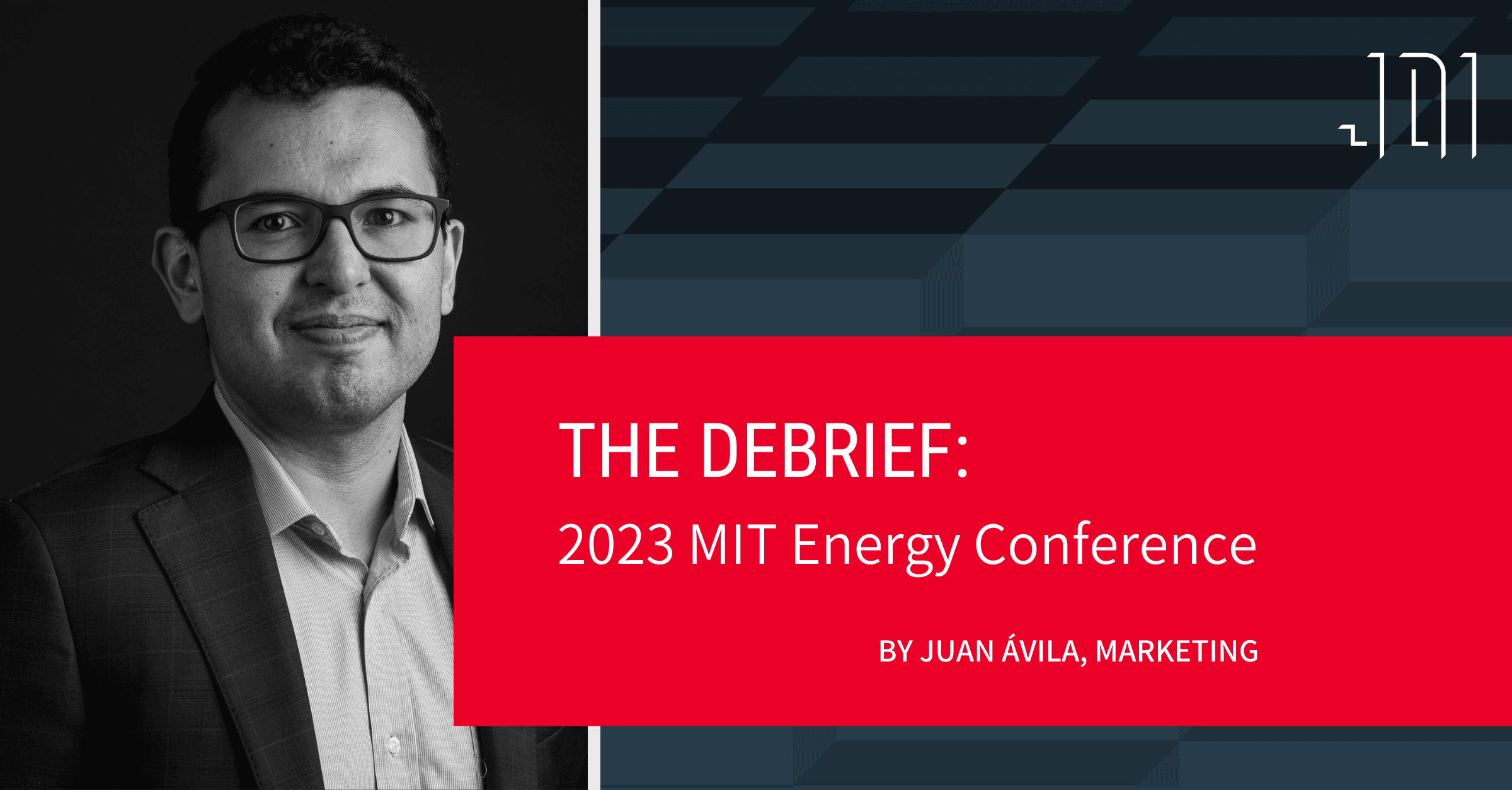The Debrief: MIT Energy Conference 2023
I recently had the opportunity to virtually attend the annual MIT Energy Conference, a gathering of industry experts, innovators, and thought leaders discussing the latest trends and innovations in the energy sector.
As a first-time attendee at an MIT event, I was impressed with the scope of the event, from the diversity of attendees and the range of topics covered. Attendees included public researchers, entrepreneurs, politicians, Fortune 500 executives, and a number of students from universities throughout the United States. Keynote panels focused on automation, hydrogen technologies, advanced batteries, nuclear and geothermal energy, and the role of the built environment in achieving a zero-carbon economy.
The overarching theme surrounding the conference was the “Transition Under Crisis” – reflecting the disparity between the goals set forth in The Paris Agreement for participating nations at the UN, and where we stand today. After listening to presentations from speakers around the world, I was humbled and hopeful: in spite of the long road ahead, countless individuals are tackling this generational challenge. The energy transition is an undertaking that will affect every life, present and future, in every country. A more accurate theme might have been, “Reality in the Transition Era.”
The reality is, the energy transition is going to take a lot more work than we realized, and there likely won’t be a finish line. Many of the speakers in attendance were former or current policy makers for clean energy. I was struck by how many of them echoed the same message. The two pillars for a successful energy transition: progress and vigilance.
Humans are making progress, which should be commended. We are making great strides to phase out coal, use methane more efficiently, and build renewable energy infrastructure. We are approaching the energy transition as a science and technology problem through independent ventures and public and private research, as well as a policy problem from local governments to the federal level. We are changing how we build and power what we depend on most – our homes, our businesses, and our infrastructure – to draw less energy and contribute fewer emissions. This progress has been safeguarded by government action to protect what we have and push us even further. The Paris Agreement has led to a shift in the way countries are viewing their own futures. We cannot stop now.
But progress without vigilance risks running into pitfalls, losing momentum, and stalling the long path required to achieve a successful energy transition. We have to be mindful of the goals that we’ve set for ourselves so that we’re not derailed. Our future is uncertain, and we’re laying the tracks in front of a moving train. Everyone, from the researchers on the front lines down to the marketers like myself, need to remember the goals we set before us and not to block our own way or veer off course. Our lives, after all, move a heck of a lot faster than the five year cycle of the Paris Agreement. 2050 is simultaneously a long way away and right around the corner, and the most important step along our journey will always be the next ones we take.
Quick Hit Trends
These are some of the industries and companies that impressed me the most, and JDI has identified as worth keeping your eyes on:
Geothermal Heating Up
Geothermal energy is getting mentioned in the same breath as solar and wind power – and that’s a big deal. Fueled by years of experience from the oil and gas industry, geothermal energy is set to become a major player in the energy markets. Check out Project InnerSpace for how we get there, or Baker Hughes for industry insights into well exploration and drilling.
Materials Acquisition
This one isn’t quite as bright a picture as other areas, partly because materials acquisition in the current geopolitical climate is shifting to a nationalist perspective. Countries are making strides to secure their own supply, but it is quite challenging to not get caught between the US and China. The good news is, this puts a bigger emphasis on alternative options: for recycling take a look into Nth Cycle or Relyion Energy, and Group14 Technologies for carbon silicon batteries.
Hydrogen
Hydrogen’s role in the energy transition remains tricky: will it be a part of the grid, or will it be a transportation solution? Only time will tell, but Hydrogen is already in high demand today in the steel and cement industries. Companies like H2 Green Steel and Boston Metal are doing their part to decarbonize the construction industry already.




